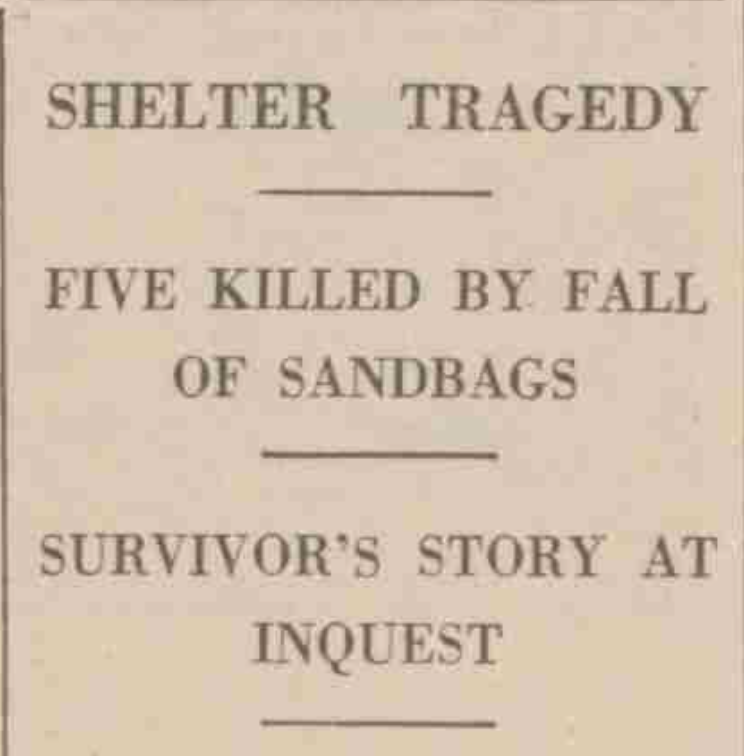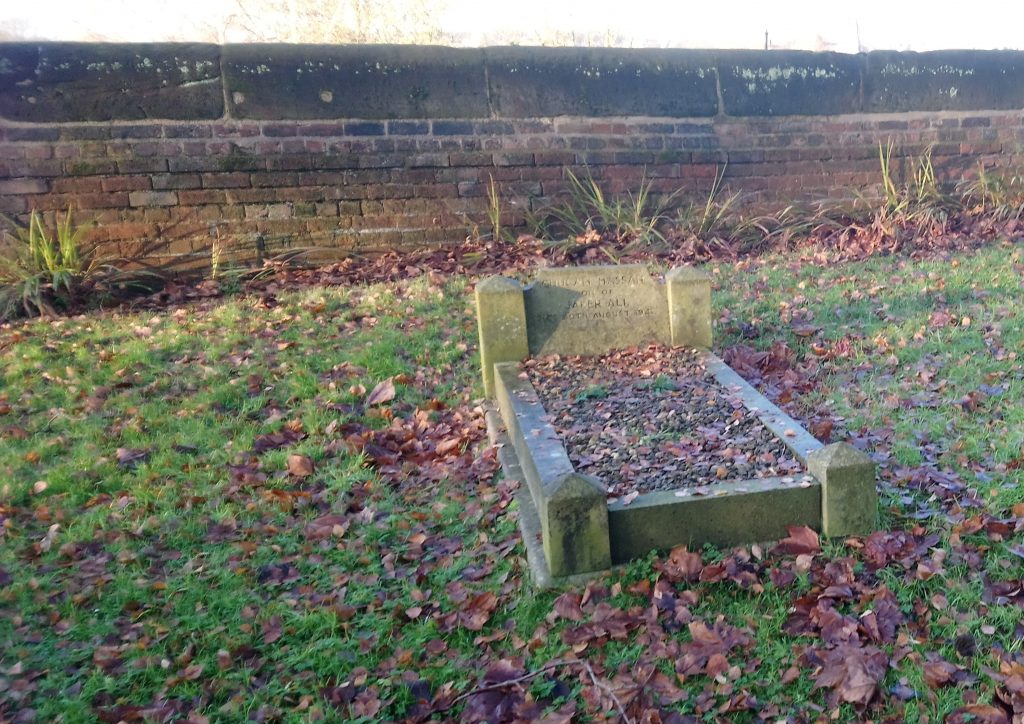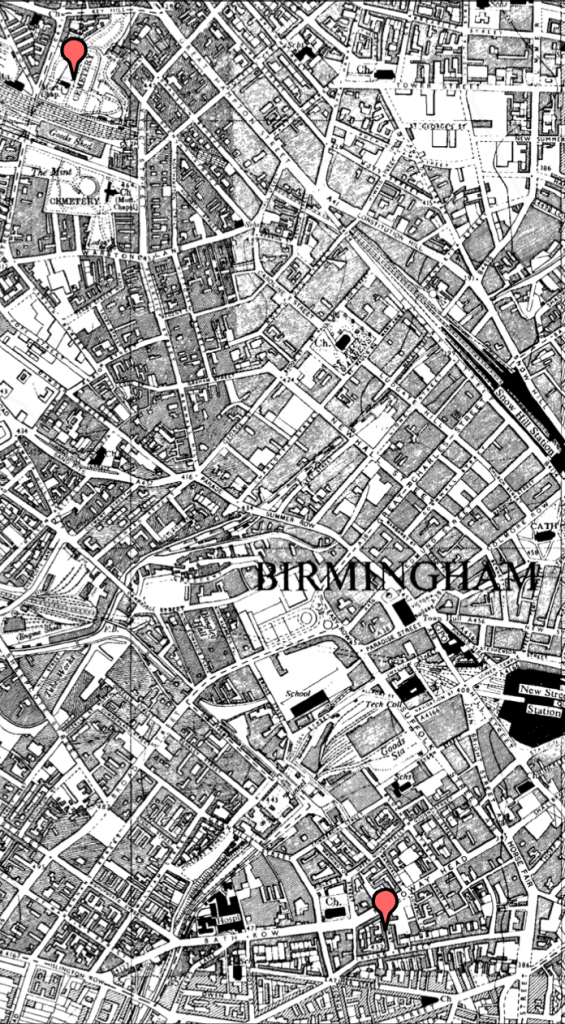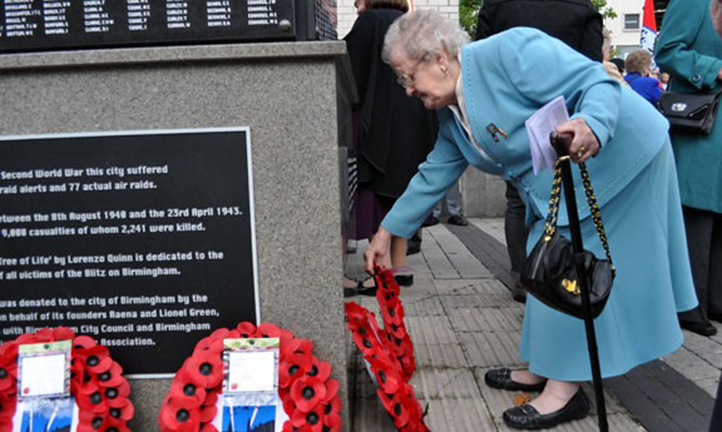On the 2th November 1940, five individuals suffocated in an air raid accident when a wall of sandbags collapsed. The incident was reported by The Birmingham Gazette and The Birmingham Mail. An inquest was reported on the death of “three Indians” and “two British Jews”, finding the incident to be an accident.

The victims included Shadi Mohammed (age 39), Deborah Shadi Mohammed (age 26), Gulham Mohammed (age 37), Hyham Borsook (age 30), Lily Borsook (age 34). According to the newspaper reports, the five lived at 9 Sutton Street, near Holloway Head. A first-hand report of the night was given by an individual named Sha Shah “of the Bow, London”, who appeared to be a friend of the group. The location of the shelter was not specified, only described as a “basement” reinforced by “blast walls” or sandbags according to the Mail.
Shadi Mohammed and Gulham Mohammed were both buried in Key Hill Cemetery November 1940. Shadi in Grave H26 and Gulham in H27. Their graves are unmarked, but are next to the headstone of another Muslim, Ghulam Hassan son of Jafer Ali, who died in 1941. The burial records seem to indicate that this area was set aside for Muslim burials in the 1940s, including some reuse of public graves from the 1840s. Key Hill cemetery was a general cemetery, open to all creeds and denominations, and is unconsecrated.

| Plot | Name | Date |
| H30 | HASSAN Mohamed Hussein | 1942 |
| H29 | HASSAM Ghulam | 1941 |
| H28 | DEAN Khir | 1941 |
| H27 | MOHAMMED Gluham | 1940 |
| H26 | MOHAMMED Shadi | 1940 |
There is limited further information about Shadi or Gulham Mohammed. Their approximate ages were recorded in the death certificate, both being born around 1901 (though contradicted by the newspaper article) and it is difficult to ascertain if they were related.
The electoral register of 1939 records a Mohammed Gulham living in 41 Summer Lane, Flat 1, so it is possible they had not been living in Sutton Street for very long at the time of the accident.

Further research has failed to turn up any further concrete information about any of those killed. There are two different boat records of a supposed Mohammed Gulham, but we cannot conclusively prove if either of these refers to the person killed in Birmingham. We do not have access to birth records so it is possible that the year of birth recorded on the death certificate (1903) may be an approximation, so we cannot completely rule these out.
One records a trip from Liverpool to Bombay, India on the Castalia on the 26 Jan 1933. This Mohammed Gulham was recorded as aged 31, thus born in around 1902. This record involves residence in Glasgow and intent to remain in Scotland, also making this record unlikely.

Another records a trip from Liverpool to Bombay, India onboard the Circassian on the 2nd November 1938. The Mohammed Gulham recorded was aged 36 (so born around 1902). His residence was recorded in 19 Brunswick Street, Manchester. Furthermore, the intent to permanently reside in India makes this match unlikely.

It is difficult to further verify if these records match the Mohammed Gulham buried at Key Hill Cemetery, and indeed, may have been a common name at the time. It is possible that all these records refer to the same person, Mohammed Gulham, whose occupation was ‘pedlar’ or ‘traveller’ which explains multiple journeys between the UK and India in the 1930s. If Mohammed Gulham had been in the Midlands on business at the outbreak of war, perhaps he would have decided to stay in Birmingham where there was a small Indian community.
In 1932, the Indian National Congress survey of “all Indians outside India” (which included modern Pakistani and Bangladeshi territories) estimated that there were 7,128 Indians living in the United Kingdom, which included students and professionals such as doctors. The resident Indian population of Birmingham was recorded at 100 by 1939. By 1945 it was 1,000.
Following the Second World War and the passing of the British Nationality Act 1948, Indian migration to the UK increased during the 1950s and 1960s.
Further Reading
Asians in Britain : 400 years of history by Rosina Visram, available via Birmingham Libraries
WW2 Sandbag deaths by Friends of Key Hill and Warstone Lane Cemetery



